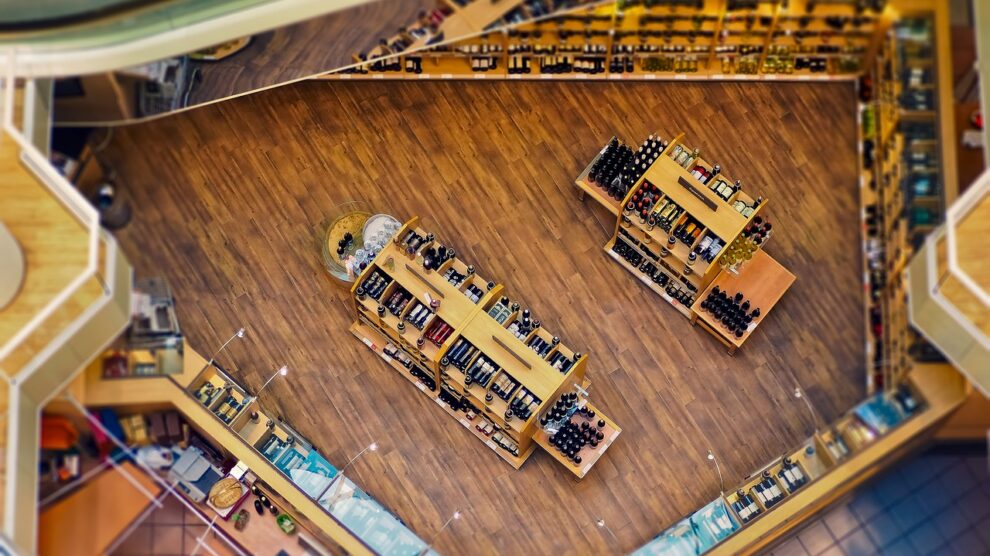With the recent announcement of Bed, Bath, and Beyond filing bankruptcy, people are seeing another major store fall prey to the so-called “retail apocalypse.” Over the past decade, the public has observed over 150 major retailers close their doors and file bankruptcy, including RadioShack, JCPenny, Aeropostale, Pier 1 Imports, Sears, K-Mart, and Borders, amongst others.
According to several analysts, 50,000 brick-and-mortar stores are expected to close within the next five years. However, The National Retail Federation predicts that 70 percent of retail sales will come from physical storefronts.
As we’ve watched company after company close their physical storefronts, hoping to save overhead costs, we’ve found the outcome of this to be vastly different than the intention. Getting out of leases early and losing foot traffic — not to mention the millions of dollars in revenue that were generated from those stores — has forced these companies to close their doors permanently. Toys ‘R’ Us, for example, provides a perfect case study of mismanagement and closing storefronts prematurely, on top of other things.
Creating Additional Revenue Streams via Short-term Leases and Bulk Gift Card Purchases
While closing down storefronts may seem like the only option during trying financial times, it doesn’t have to be an all-or-nothing approach. Instead of shutting down physical stores throughout the country, brands can join with major retailers and help keep costs down by sharing overhead.
For example, Sephora can now be found in JCPenney, Kohl’s, and even Target. And while independent Toys ‘R’ Us storefronts no longer exist, you can still find them in their own pop-up section at Macy’s. Providing short-term leases helps alleviate the storefront retailer — in this example, JCPenney or Macy’s — and the brand they’re working with — Sephora or Toys ‘R’ Us — both gain increased foot traffic and, therefore, increased revenue.
By partnering with different brands, the main retailer can create a pop-up event in which the brands provide free gift cards for the benefit of everyone involved — the main retailer, the brand, and the customers. Pop-up events help create an experiential atmosphere and a sense of urgency, which helps generate further business through organic, word-of-mouth advertising. And hosting it in the main retailer’s space provides all parties with an opportunity to maximize their revenue at that specific location.
Learning How to Monetize Their Properties More Efficiently
If Bed, Bath, & Beyond did a better job at partnering with brands and creating an interactive space in their stores, they could have had several million more dollars hitting their bottom line. Monetizing your properties more efficiently involves more than just location and brand deals — it has to do with an omnichannel approach that integrates both online and offline experiences. Offering in-store pickups for online orders, or providing online promotions that can be redeemed in-store, helps foster feelings of trust and loyalty in customers.
Additionally, store layout optimization has a significant impact on the customer’s experience as they walk into the store. Displaying popular products at the front and leaving room for others behind this space allows room for each brand to provide a relaxed vibe, rather than block everything off with shelves. For example, Anthropologie works with many designers in order to create different atmospheres with decor and lighting, depending on the specific designer. Target has also begun to do this in their stores’ clothing section with their featured designers and clothing brands.
Using Bed, Bath, & Beyond again as an example, imagine if they had worked to separate their store by different styles, similar to IKEA; traditional, mid-century modern, farmhouse, etc. They may not have had to have significant layoffs or close stores, and their overall earnings would have looked a lot healthier to their shareholders.
Compensating the Retailers and Rewarding Their Customers
Today’s customer journey isn’t about need — it’s about convenience. Making life easier for the customer should be the objective of any modern retailer. Providing free gift cards to customers, for example, helps boost customer satisfaction and loyalty by creating a positive memorable experience that eliminates some worry about how they might best pay for their purchases. And just as satisfied customers are more likely to become repeat customers, repeat customers of a company are more likely to refer them to their friends, families, and even coworkers.
Free gift cards are a win-win for everyone — the retailer, partnered brands, and the customer — and the best part is giving your customer gift cards doesn’t cost the retailer any additional money. In fact, it provides upselling and cross-selling opportunities by serving as a traffic-driving tool while also improving the retailer’s bottom line.
By selecting gift cards that resonate with customers and strategically integrating them into the customer journey, retailers can create a beneficial situation that compensates the retailers through increased customer satisfaction. In today’s market and pending recession — or “slowcession” — free money is extremely valuable to anyone whether they’re struggling or not.
More importantly, offering free gifts helps retailers and brands differentiate themselves from competitors. It demonstrates a commitment to the customer and their needs, and provides an added incentive for customers to choose their store over others.
To thrive in today’s competitive landscape, retailers must recognize the changing dynamics of the customer journey. By focusing on delivering value and providing immersive experiences, retailers can forge meaningful connections with their customers, foster brand loyalty, and secure their place in the hearts and minds of consumers.
The path to success lies not only in selling products. It lies in creating remarkable and memorable moments that turn customers into brand advocates and transform retail into a destination.





